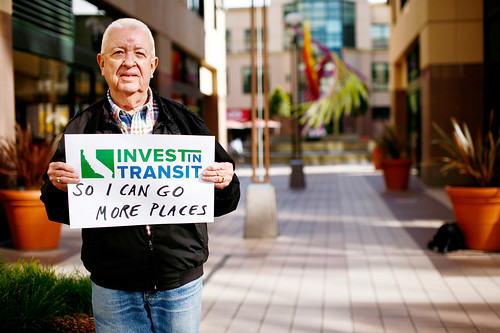How walkable, transit-oriented neighborhoods help seniors

Posted June 5, 2012 at 5:41PM
The video below, produced by AARP in collaboration with StreetFilms, provides a superb illustration of how walkable, transit-oriented neighborhoods can help seniors. From AARP’s website:
“Active Living for All Ages: Creating Neighborhoods Around Transit shows how transit-oriented development (TOD) facilitates the independence and mobility of older adults. This new six-minute video features conversations with residents, local officials and experts in TOD in Arlington, Virginia—a walkable, mixed-use community with access to a variety of public transit options, entertainment and recreation, and basic services such as shopping and medical services.”
The site also includes a link to a great personal account by an Arlington senior of how important her neighborhood and its assets are to her.
As I noted in one of my earliest blog posts, these are very important issues, borne out by data:
- 600,000 people ages 70 and older stop driving every year.
- More than 20 percent of Americans 56 and older do not drive.
- 3.6 million nondrivers older than 65 stay at home on any given day because they have no other option.
- Older nondrivers are likely to make 15 percent fewer trips to the doctor, 59 percent fewer trips to stores or restaurants, and 65 percent fewer trips to social, family or religious gatherings.
- The number of senior citizens is expected to double by 2030.
Many communities are beginning to respond, and the video shows how:
Related posts:
- Promoting people-oriented development around transit (May 21, 2012)
- It takes a village to age in place (October 17, 2008)
- Communities for all ages (December 9, 2007)
- EPA invites communities to apply for awards for active aging and smart growth strategies (March 8, 2011)
- Smart growth and active aging: EPA’s informative new guide (August 21, 2009)
Move your cursor over the images for credit information.
Please also visit NRDC’s sustainable communities video channel.
